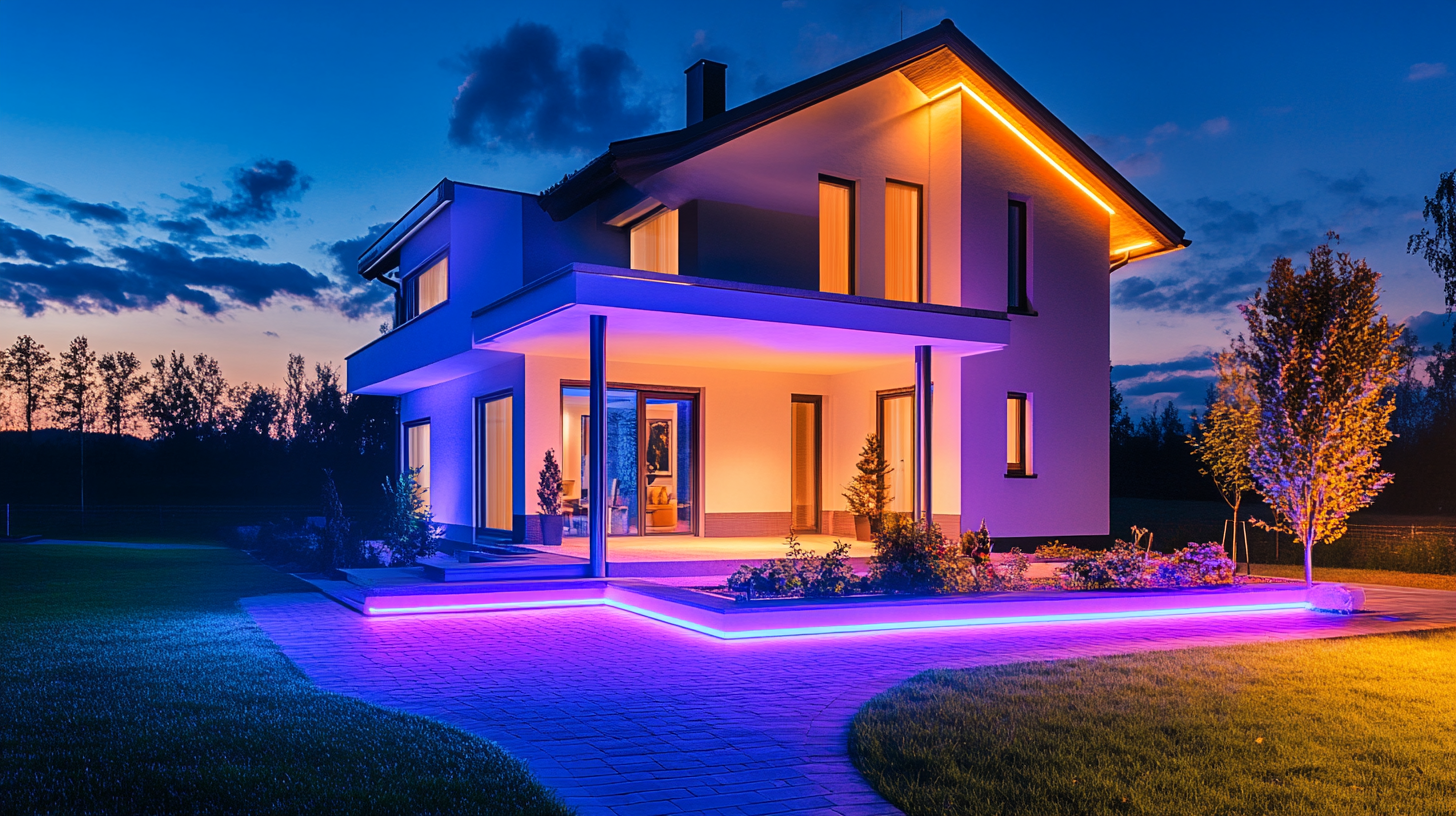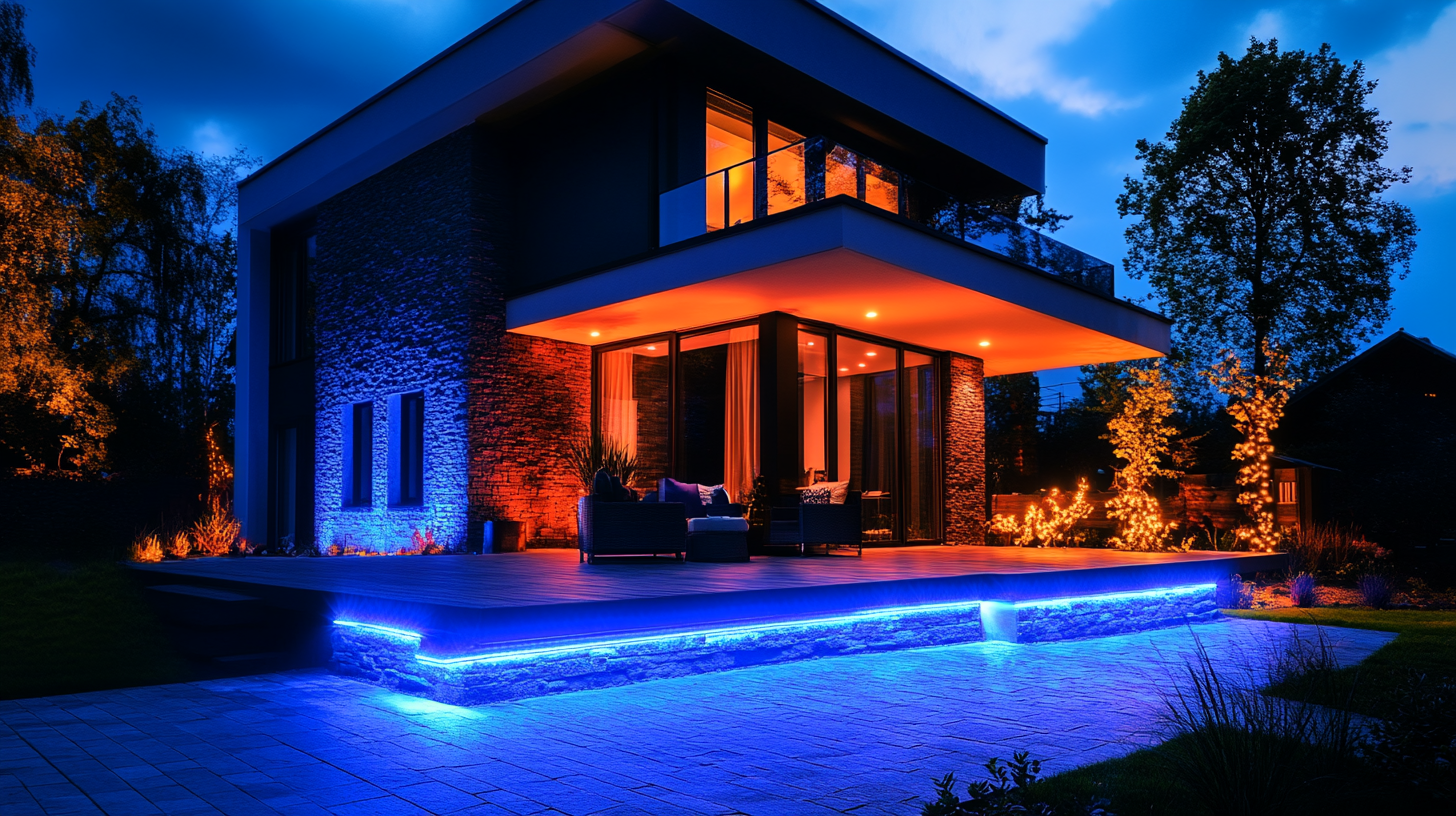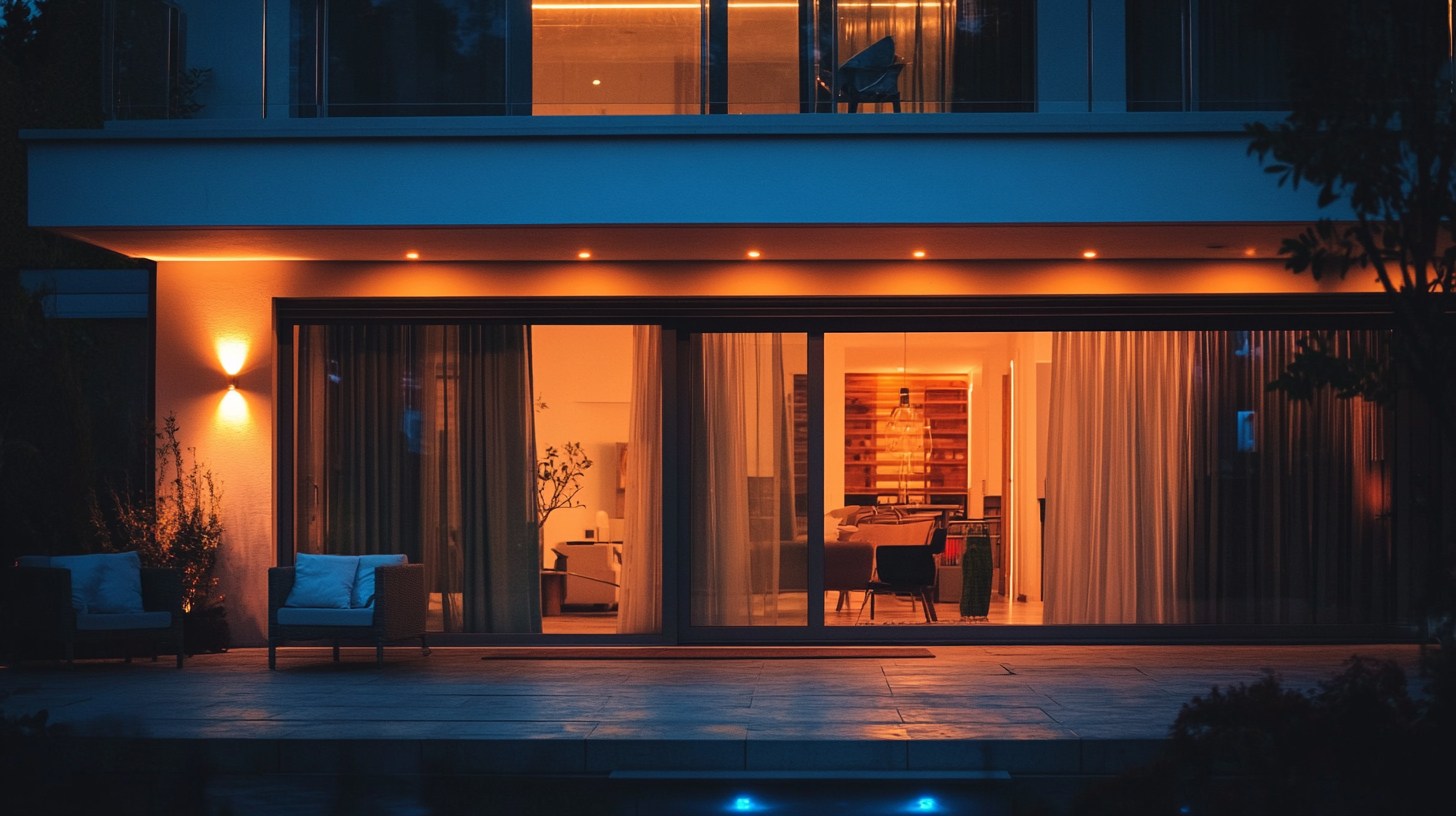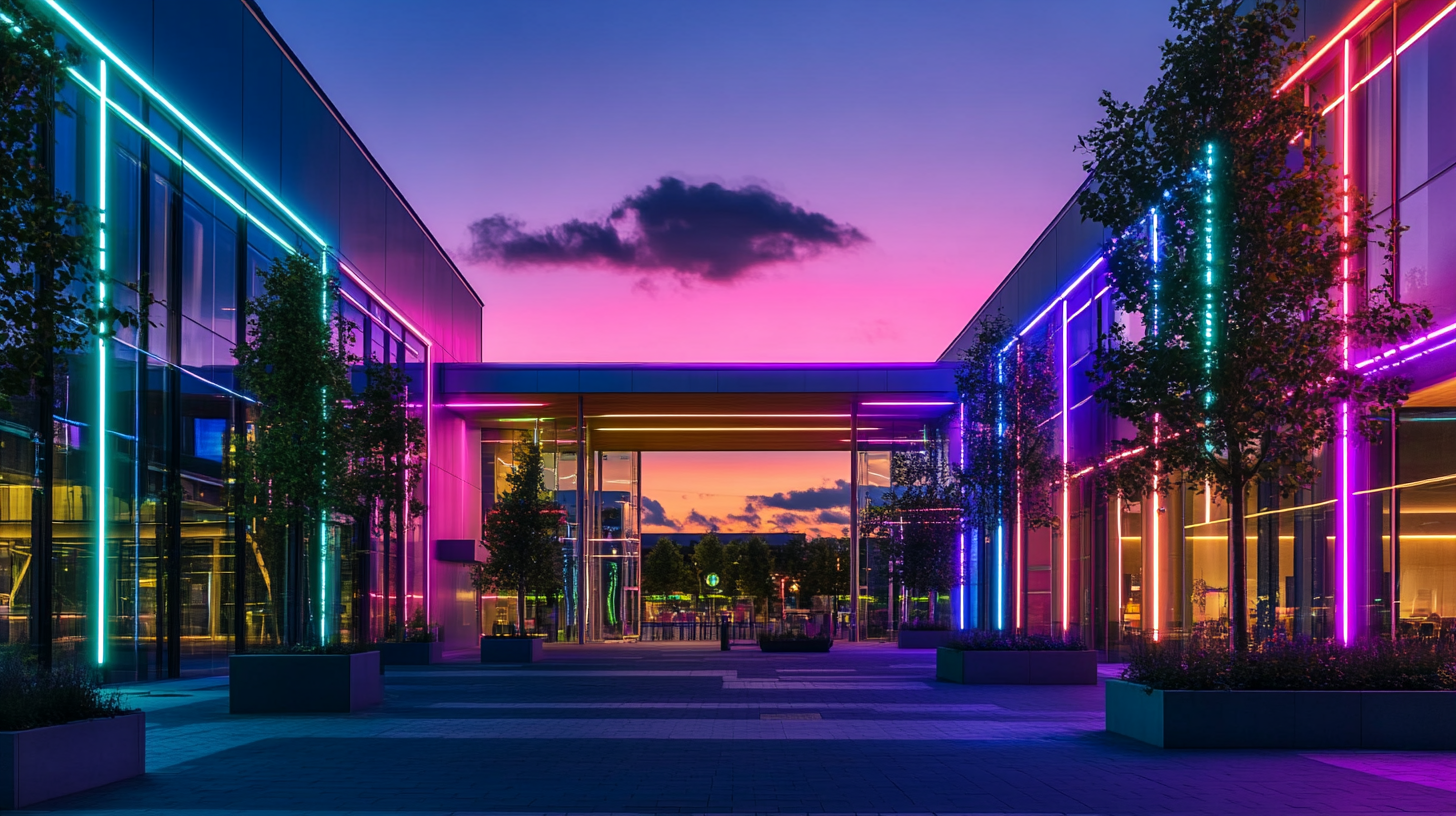Global Trends Shaping the Future of Exterior Led Lighting Industry by 2025
The advancements made in various technological horizons, environment, and consumer preferences align together in bringing radical changes in external LED lighting as we dive into the period mid-2020. To a cityscape or a house facade, exterior LED lighting will be one of the most important features to reassure safety, beauty, and even energy efficiency in the coming years. This blog aims to explore some of the world's trends causing changes in this dynamic sector, focusing on how cutting-edge designs and innovative technologies are delivering changes in outdoor lighting solutions.
Sustainability brings that halo change in this phase of the industry; enhance the eco- friendly shape over green ideas and green products. There are other features-focused designs of exterior LED lights into the so-called smart lights, which use less energy and adapt to relevant surroundings. While we progress through these tendencies, we will unveil the major forces shaping what exterior LED lighting means for its audiences today and for the future in terms of deciding how technological innovations turn markets alive by 2025.

Impact of Energy Efficiency Standards on LED Lighting Adoption
The most important factor influencing the adoption of LED lighting is new energy efficiency standards that are getting stricter all over the world. The governments, as well as regulators, recognize the urgency of sustainable energy solutions, hence the introduction of policies that promote energy efficiency standards for lighting technologies. This created a platform for manufacturers that ultimately pushes them to make innovative ideas towards producing LEDs with less power consumption and life expectancy enhancement. Such regulations have been creating a common scenario under which all parties are to operate within, shifting the direction of the LED lighting industry, thereby compelling both the producers and consumers to take energy efficiency very seriously. Such energy efficiency standards assure consumers of returns on their investments. Knowing a clear guideline on the performance and consumption of energy would facilitate most buyers opting for LED alternatives instead of the traditional types of lighting. This trend manifests more in commercial sectors with companies seeking to cut costs associated with operations while paying more attention to sustainability. This, coupled with the increasing market demand for LED products meeting these standards, is prompting manufacturers to embrace innovation but also transparency and authenticity in their products. Regulation as well as consumer awareness will form the primary determinants of LED lighting growth in the future years as we approach 2025. Organizations that emphasize creating energy-efficient products along with regulatory compliance will find their way ahead in what is now becoming an extending market. Thus, this intersection between policy and consumer preference presents a bright future for outdoor space LED lighting, clearly indicating the advance step toward green lighting solutions for the entire globe.

Emerging Technologies Driving Innovation in Exterior Lighting Solutions
The exterior LED lighting sector is moving toward a new era, ushered in by emerging technologies that have been bringing innovation so quickly into this industry. A report from Grand View Research states that the global market for LED lighting will go up to approximately 137 billion dollars in 2025, with a compound annual growth rate (CAGR) exceeding 13%. One of the major infrastructural developments owing to the improvement of smart lighting systems, which include IoT technology, to achieve energy efficiency and extended functionality.
Smart outdoor lighting is gradually becoming a buzzword these days, and many of its features will soon enable a city to consume a substantial percentage of energy. Research by the American Council for an Energy-Efficient Economy states that smart outdoor lighting could yield energy savings of maybe as high as 60%. The aforementioned systems are outfitted with sensors and connections for real-time monitoring and control of streetlights and public spaces. As a result of the implementation of intelligent systems by cities in the future, demand for highly designed exterior LED lightings will continue to grow.
External lighting solutions using solar technology now provide additional avenues for sustainability. In a report prepared by Persistence Market Research, the market for solar LED street lighting will see a rise with a CAGR of 22% over the next five years. Besides causing less environmental impacts, it, thus, cuts operational costs and, for this reason, offers its features in favor of both sides: urban planners and environmentalists. Innovations in battery storage and energy management will pave the way for solar-powered LED lighting in future urban development strategies toward smart and resilient cities.

Sustainability Trends Influencing the Future of Outdoor LED Applications
As the world keeps on changing its focus to sustainability, where that change is to be seen is in the outdoor LED lighting industry. Probably one of the most important trends has been the economically efficient solutions. Incorporating smart technologies, outdoor LED applications have been proven to consume far less power than traditional lighting systems. This further innovation not only reduces waste in energy but also offers dynamic solutions that get adjusted depending on the surrounding conditions and usage patterns.
In addition, the manufacturers are producing sustainable products such as sustainable materials and processes to manufacture them. The principle of eco-friendly constituents has led to most outdoor lighting that are even made up of recyclable materials with no hazardous substances in their construction. It does not speak for the environmental conscience of the consumer, but goes further in synergy with global regulations in its reduction of carbon footprints. Circular economy principles are progressively being adopted as best practices, such that products last longer and impact the environment as less.
Last but not least, the other upcoming trend is instilling renewable energy in outdoor LED systems. Solar-powered LED lights are especially gaining popularity in remote areas because of the unreliability or unavailability of conventional energy sources. Such a practice will enhance the process of sustainability and energy independence for the communities. Since the market continues to be influenced by these trends, there is no doubt that most outdoor LED applications will be changed toward a direction very sustainable. The future of this industry is bright, and responsible.

The Role of Smart City Initiatives in Shaping Lighting Infrastructure
The evolution of exterior LED lighting has closely correlated with smart city schemes that have transformed urban infrastructure, as well as on-the-ground investments in smart technologies by cities across the globe. More relevant, intelligent lighting systems connected to smart cities enhance energy efficiency but also serve the entire responsiveness of cities. For example, Shenzhen, among many areas that are drafted for huge development plans heavily focusing on AI and smart technology development in urban planning, is ensuring adaptability of lighting solutions under changing city needs.
Smart city initiatives have the efficacy of implementing data analytics and IoT connectivity in developing lighting infrastructures that respond in real-time to ever-changing present conditions like pedestrian activities or light levels in the environment. Up-to-date investment in intelligent street-lighting systems would improve security and availability to move urban dwellers significantly. Apart from that, such types of technologies would deliver great energy savings aligning to worldwide sustainability objectives.
The new technologies being absorbed by cities increasingly continue to sharpen the lighting industry for required better, smarter systems. Greater chances for improvements are provided in the LED domain through smart city initiatives, as they involve the much-needed concepts of flexibility and end-user design that would eventually lead to a greener, more connected urban future.
Consumer Preferences and Their Effect on Exterior LED Design Trends
Changes in consumer preferences continue to metamorphose the exterior LED lighting market. Consumers want aesthetics and energy-efficient solutions; thus, the manufacturers undergo constant innovations. This trend goes hand in hand with the trend of popular consumer products, such as the "second refrigerator" trend exhibited by brands like Yuno, which thrives because of the need it satisfies, as a blend of composite features with contemporary design.
Primarily, with car design trends such as those of the Tesla Cybertruck, there does seem to be an ongoing inclination toward futuristic yet practical design. This amalgamation of science fiction and classical influences can attract a significant consumer base since it reflects a shift in design as functional but more importantly experience adding. To allude to events like the Shanghai Auto Show, vehicle designs are increasingly channeling LED lighting to produce modern effects with sophistication: All these influences would of course create waves in trends in exterior lighting.
With the rise of awareness towards environmental issues likely among consumers, the trend toward sustainable lighting seems to be on the rise for the next few years. Eco-friendly exterior LED designs providing superior energy efficiency with high quality and class in stunning designs are likely to rule the marketplace by 2025. Undoubtedly, consumers' preferences tend toward very sleek, modern-looking designs and eco-friendliness. All of these put together would make the future of the exterior LED lighting sector much more dynamic and competitive.
